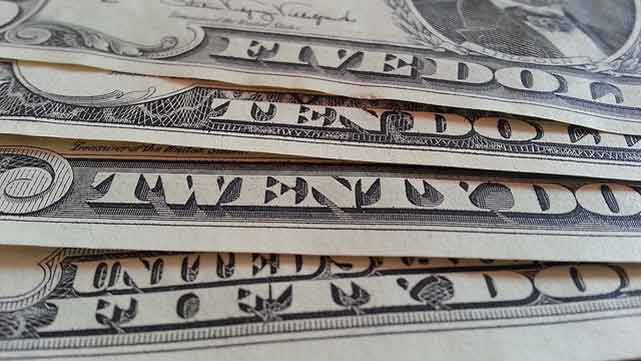Pound to Dollar Forecast: GBP Eyes 1.33 as Markets Bet on BoE Rate Cut
- Written by
David Woodsmith

The Pound to Dollar exchange rate (GBP/USD) surged on Friday following a dismal US labour market report but failed to hold above the 1.3300 handle.
The GBP/USD rate found support near 1.3250 and resumed its ascent on Monday, again challenging the 1.3300 level as the US Dollar remained under pressure across global markets.
Recovering equity markets helped bolster global risk sentiment, offering support to Sterling in broader trading conditions.
According to UOB, “The likelihood of GBP breaking clearly below 1.3140 has diminished considerably, but only a breach of 1.3355 would indicate that the GBP weakness from early last week has stabilised.”
The US Dollar posted sharp losses on Friday after the latest non-farm payrolls data revealed significantly weaker job creation. Confidence in the Dollar deteriorated further after the White House dismissed the head of the Bureau of Labor Statistics (BLS), with former President Trump accusing the agency of releasing “fake” data.
Concerns about the politicisation of economic institutions in the US are unsettling investors and adding to pressure on the Dollar exchange rate.
ING noted: “Uncertainty about the quality of US data is not a good look for US asset markets and could add some more risk premium both into the Dollar and Treasuries.”
Danske Bank added: “It’s too early to panic about the labour market, but not too early to acknowledge that warning lights are flashing.”
Macquarie Group’s David Doyle flagged the likely impact on Fed policy: “The results of this report are likely to shift the FOMC’s assessment of the balance of risks to the outlook. We pull forward our baseline call for a 25bps cut from the FOMC to September.”
MUFG highlighted fading optimism in markets: “We always believed there was a degree of complacency and unjustified optimism in relation to the tariff impact on the US economy and the jobs data on Friday could alter that view dramatically.”
US Treasury yields declined sharply, with similar moves last seen in December 2023 and August 2024. On both occasions, the Dollar exchange rate suffered notable losses in the following month. However, MUFG notes: “The Dollar is now at weaker levels than on those previous occasions, having fallen 10% in the first half of the year—the largest drop since 1973. That certainly reduces the prospect of a similar scale of move on this occasion.”
Back in the UK, markets are focused on this week’s Bank of England (BoE) meeting, with strong expectations for a 25 basis point rate cut to 4.00%. Such a move would mark a key moment in the Sterling outlook, with potential implications for the Pound to Dollar forecast.
Danske Bank said: “We expect the Bank of England to cut the Bank Rate to 4.00% on Thursday 7 August, in line with consensus and market pricing. We expect the vote split to be 6-3, with the majority voting for a 25bp cut and Greene, Mann, and Pill voting to hold.”
Updated forward guidance and revised forecasts on growth and inflation from the BoE will be crucial in determining near-term momentum for the Pound, particularly as traders evaluate risks to the UK economy.
For now, the GBP/USD exchange rate remains pinned near 1.3300, with short-term direction likely to hinge on central bank guidance and any fresh shocks from US economic data.
STORY LINK Pound to Dollar Forecast: GBP Eyes 1.33 as Markets Bet on BoE Rate Cut

The Pound to Dollar exchange rate (GBP/USD) surged on Friday following a dismal US labour market report but failed to hold above the 1.3300 handle.
The GBP/USD rate found support near 1.3250 and resumed its ascent on Monday, again challenging the 1.3300 level as the US Dollar remained under pressure across global markets.
Recovering equity markets helped bolster global risk sentiment, offering support to Sterling in broader trading conditions.
According to UOB, “The likelihood of GBP breaking clearly below 1.3140 has diminished considerably, but only a breach of 1.3355 would indicate that the GBP weakness from early last week has stabilised.”
The US Dollar posted sharp losses on Friday after the latest non-farm payrolls data revealed significantly weaker job creation. Confidence in the Dollar deteriorated further after the White House dismissed the head of the Bureau of Labor Statistics (BLS), with former President Trump accusing the agency of releasing “fake” data.
Concerns about the politicisation of economic institutions in the US are unsettling investors and adding to pressure on the Dollar exchange rate.
ING noted: “Uncertainty about the quality of US data is not a good look for US asset markets and could add some more risk premium both into the Dollar and Treasuries.”
Save on Your GBP/USD Transfer
Get better rates and lower fees on your next international money transfer. Compare TorFX with top UK banks in seconds and see how much you could save.
Macquarie Group’s David Doyle flagged the likely impact on Fed policy: “The results of this report are likely to shift the FOMC’s assessment of the balance of risks to the outlook. We pull forward our baseline call for a 25bps cut from the FOMC to September.”
MUFG highlighted fading optimism in markets: “We always believed there was a degree of complacency and unjustified optimism in relation to the tariff impact on the US economy and the jobs data on Friday could alter that view dramatically.”
US Treasury yields declined sharply, with similar moves last seen in December 2023 and August 2024. On both occasions, the Dollar exchange rate suffered notable losses in the following month. However, MUFG notes: “The Dollar is now at weaker levels than on those previous occasions, having fallen 10% in the first half of the year—the largest drop since 1973. That certainly reduces the prospect of a similar scale of move on this occasion.”
Back in the UK, markets are focused on this week’s Bank of England (BoE) meeting, with strong expectations for a 25 basis point rate cut to 4.00%. Such a move would mark a key moment in the Sterling outlook, with potential implications for the Pound to Dollar forecast.
Danske Bank said: “We expect the Bank of England to cut the Bank Rate to 4.00% on Thursday 7 August, in line with consensus and market pricing. We expect the vote split to be 6-3, with the majority voting for a 25bp cut and Greene, Mann, and Pill voting to hold.”
Updated forward guidance and revised forecasts on growth and inflation from the BoE will be crucial in determining near-term momentum for the Pound, particularly as traders evaluate risks to the UK economy.
For now, the GBP/USD exchange rate remains pinned near 1.3300, with short-term direction likely to hinge on central bank guidance and any fresh shocks from US economic data.
International Money Transfer? Ask our resident FX expert a money transfer question or try John's new, free, no-obligation personal service! ,where he helps every step of the way, ensuring you get the best exchange rates on your currency requirements.
TAGS: Pound Dollar Forecasts
Comments are currrently disabled
Related Stories:
- Pound to Dollar Forecast: Analysts Warns of Rate Cut Risk - October 15, 2025
- GBP/USD Forecast: Pound Sterling Falls as Traders Awaited Powell’s Speech - October 14, 2025
- Pound-to-Dollar Forecast: GBP Struggles amid Trade Tensions and Powell Focus - October 13, 2025
- Pound to Dollar Bank Forecast: HSBC and ING Bearish, Scotiabank Turns Bullish - October 13, 2025
- Pound to Dollar Forecast: Weak UK Data and Tax Fears Sink GBP - October 12, 2025
- Pound Sterling to Dollar Forecast: Fiscal Jitters Keep GBP/USD Under Pressure - October 10, 2025
- GBP/USD Forecast: Pound Sterling Slides vs Dollar Amid UK Budget Concerns - October 9, 2025
- Pound Sterling to Dollar Forecast: GBP Struggles Despite FTSE Record, Softer Yields - October 9, 2025
- Pound to Dollar Forecast: GBP/USD Slips as BoE’s Pill Calls for Cautious Approach - October 8, 2025
Latest News:
- Pound to Dollar Forecast: Analysts Warns of Rate Cut Risk - October 15, 2025
- British Pound to Euro Forecast: Why This Bank Sets Target of 1.1360 - October 15, 2025
- Euro to Dollar Forecast: 1.20 Rebound Tipped Despite Fresh 10-Week Lows - October 14, 2025
- Pound Sterling Falls vs Euro Falls on Weak UK Jobs - October 14, 2025
- GBP/USD Forecast: Pound Sterling Falls as Traders Awaited Powell’s Speech - October 14, 2025
- British Pound to Euro Forecast: Political Deadlock in France Adds to GBP Weakness Risks - October 14, 2025
- Pound-to-Dollar Forecast: GBP Struggles amid Trade Tensions and Powell Focus - October 13, 2025
- Pound-to-Euro Forecast: GBP/EUR Rises as Markets Doubt Lecornu’s Return - October 13, 2025
- Pound to Dollar Bank Forecast: HSBC and ING Bearish, Scotiabank Turns Bullish - October 13, 2025
- Euro to Dollar Week Ahead Forecast: 1.20 by Year-End? - October 13, 2025









